Imagine wandering through the picturesque province of Urubamba in Cusco, Peru, stumbling upon the breathtaking Historic Sanctuary of Machu Picchu. This hidden gem, recognized as one of the 7 Wonders of the Modern World, tells tales of ancient civilizations and timeless beauty, captivating the hearts of explorers worldwide.
Orchids:
These flowers have been appreciated since pre-Columbian times for their infinite shapes and their variety of colors. The size range of some plants is so wide that it goes from less than one centimeter, including flowers, to more than seven meters in height. Some orchids have squat and tiny shapes; others, liana type, can reach more than thirty meters in length.
Masdevallia veitchiana Rchb. F.
The queen of the orchids of Machu Picchu. It is so beautiful that it was the origin of an Inca legend: Waqanki. It has an iridescent surface and is of habit Cusco terrestrial airport, strangely epiphyte and develops between 2,100 and 3,310 meters of altitude. Odontoglossum praestans
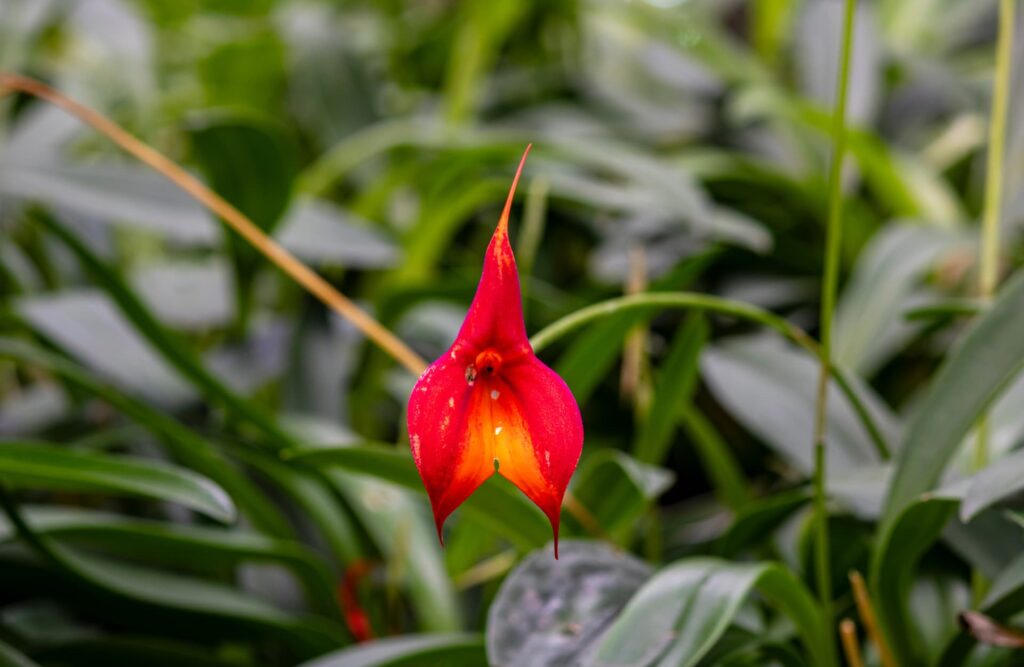
Christenson.
It is an epiphytic orchid. In Machu Picchu it is found in two life zones: in the humid subtropical jungle and the pre-mountain sub-tropical humid jungle. It blooms profusely and can produce more than ten large flowers in a cluster inflorescence that sprouts from the mature pseudobulbs. The flowers are very fragrant with a scent between jasmine and roses.
Maxillaria alpestris Lindl.
In the Historic Sanctuary of Machu Picchu it has been recorded in life zones from 2,060 to 4,150 meters of altitude, although in other areas of Cusco it has been recorded at lower levels.
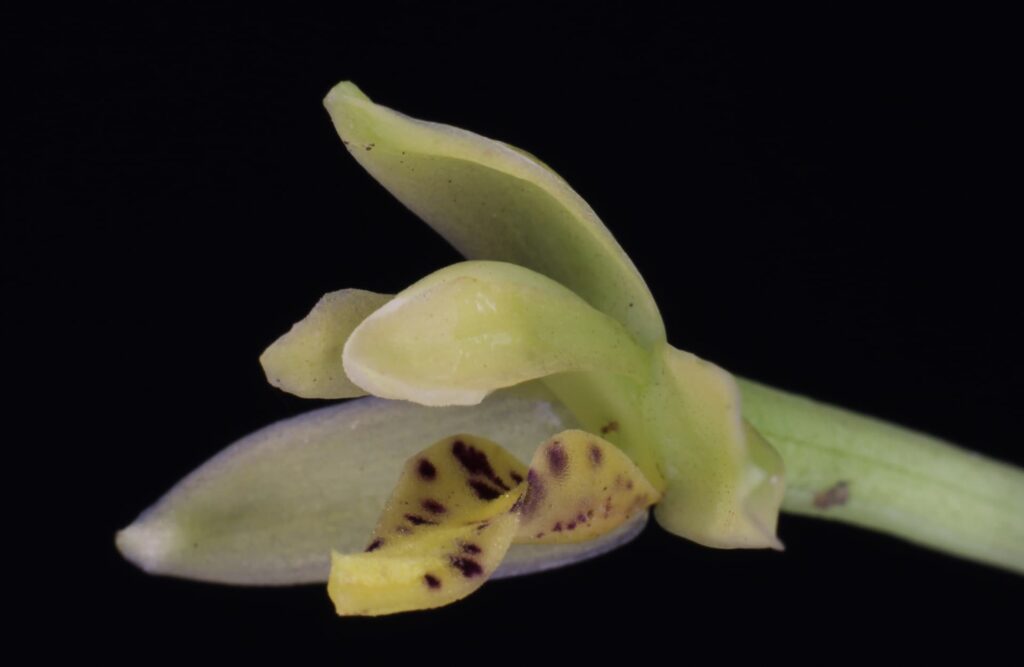
Masdevallia antonii Königer.
It presents one of the most spectacular flowers within the genus due to its large size that averages 17 cm high by 10 wide. It blooms in two periods of the year, between April and June and then between October and November.
Cryptocentrum inaequisepalum C. Schweinf.
This beautiful epiphytic and miniature species (8 mm.), Whose name derives from the Greek meaning pointed tongue, is the most widely distributed species of the genus Platystele. It thrives in rainforests and cloud forests with warm to cold temperatures.
Birds of Machu Picchu
Have you ever crossed paths with the majestic Andean condor? This impressive bird, known as the «Condor de los Andes,» holds the title of one of the largest flying birds today. Picture it soaring gracefully for hours, scouting the valleys and slopes for its next meal.
The Torrent Duck
Now, imagine encountering the Torrent Duck, a unique bird with a remarkable ability to dive and swim. Found in pairs or family groups, it navigates the fast-flowing waters of the Urubamba with ease, showcasing its aquatic prowess.
The Cheerful Overcast Bird
Next up is the Overcast Bird, a cheerful avian companion known for its bright yellow plumage and delightful singing. Its distinctive flight patterns and domesticated nature make it a charming addition to Machu Picchu’s avian community.
Green Jay
In the depths of the jungle layers, you might spot the active and opportunistic Green Jay. With its vivid blue head, green back, and yellow bill, this omnivorous bird adds a splash of color to the wilderness. Listen closely, and you’ll hear its variety of loud, vocal sounds echoing through the trees.

Black Back Thick Peak
Venturing into the ruins of Machu Picchu and along the Inca Trail, you’ll likely encounter the beautiful Black Back Thick Peak. Its spotted chest and thick bill make it easy to recognize, and its delicate singing adds a touch of serenity to the ancient landscapes.
The Vibrant Blue and Yellow Tanager
Among the many Tanagers in the area, the Blue and Yellow Tanager stands out with its active nature and striking colors. Keep an eye out for its vibrant yellow and blue plumage, a sight that adds vibrancy to the Inca Trail.
Giant Hummingbird
Imagine witnessing the Giant Hummingbird in flight – the largest of its kind globally! Despite its size, it moves gently through the air, territorial and vigilant as it hunts for sustenance beyond its food sources.
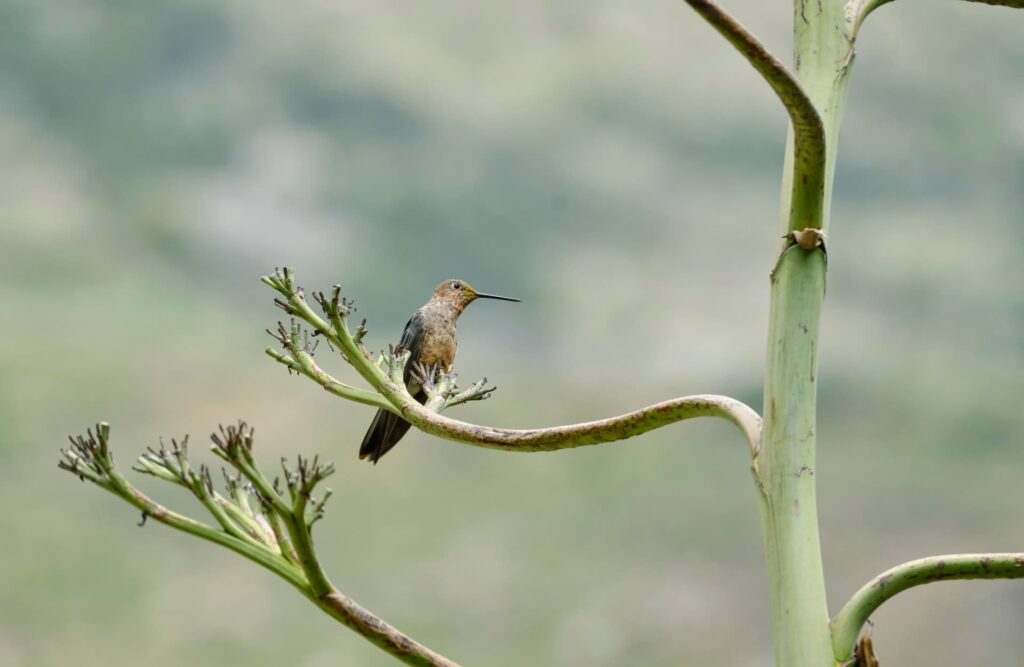
The Fascinating Green Tail
Spotting the Green Tail is a treat, thanks to its short beak and remarkably long tail. This active and aggressive bird builds intricate nests, showcasing its skills as an architect of nature.
The Gentle Cinnamon Fisherman
Along the roads and railways to Aguas Calientes, the gentle Cinnamon Fisherman stands out with its rust-red plumage. Its presence adds warmth and color to the surrounding landscapes.
The Masked Trogon
On the Inca Trail, keep an eye out for the Masked Trogon, a bird of deep red and green hues. Its captivating appearance offers a glimpse into the diverse avian life thriving in Machu Picchu’s habitats.
The Shy Cock of the Rocks
Lastly, we have the national bird of Peru, the shy and cautious Cock of the Rocks. Known for its unique courtship rituals, watching these birds engage in early morning displays is a true natural spectacle.
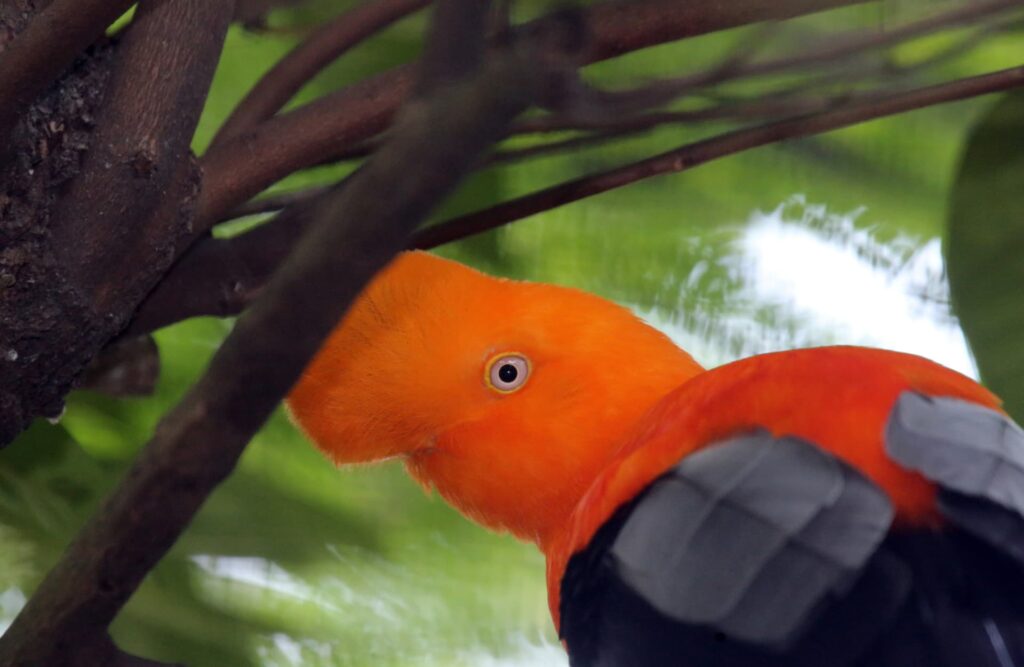
The Magnificent Lyre-shaped Tail
If you’re lucky, you might catch a glimpse of the Lyre-shaped Tail, where the male boasts a tail three times the size of its body, creating a magnificent sight that epitomizes nature’s grandeur.
Each of these birds adds a layer of charm and wonder to Machu Picchu’s already breathtaking landscapes, showcasing the richness of avian life thriving in this ancient sanctuary.
Machu Picchu’s Beloved Mammals
Let’s talk about the charming residents of Machu Picchus. These creatures are true marvels, perfectly suited to their high-altitude homes.
Llama (Lama glama)
First up is the llama, the largest of the camelid family. Imagine these majestic beings roaming the Andean plains, with adult males weighing up to 155 kg and females slightly lighter at just over 100 kg. Their long, silky fibers and varied colors make them a sight to behold.
Alpaca (Lama pacos)
Next, we have the alpaca, known for its soft and lustrous fiber. With a color range from white to black, and sometimes spotted, these creatures add a touch of elegance to the landscape. Adult males weigh around 60 kg, while females are about 55 kg.
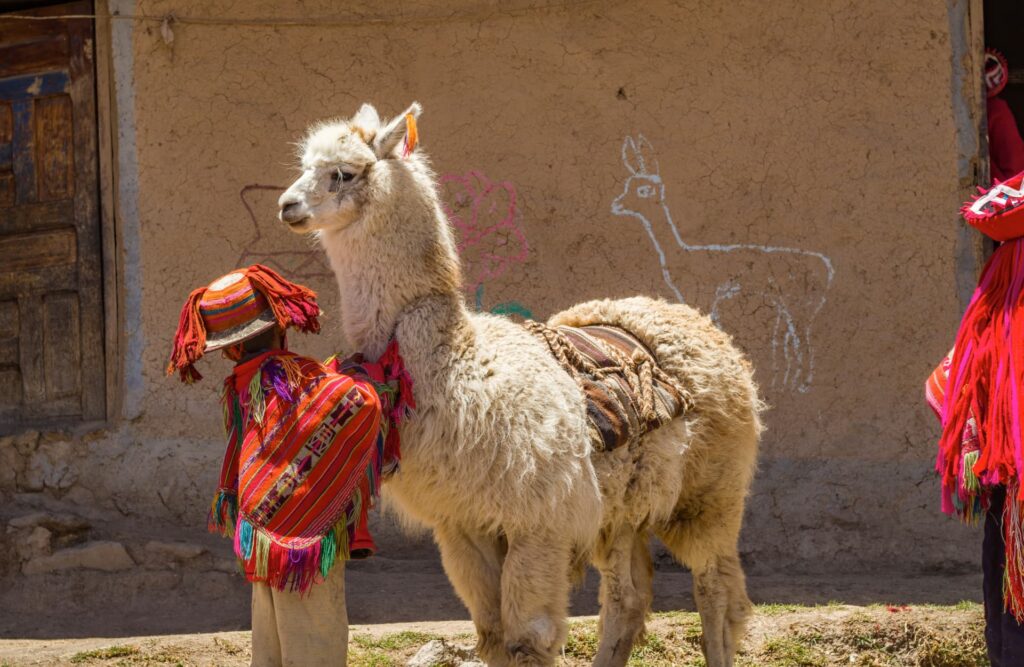
Vicuña (Vicugna vicugna)
Moving on to the smallest of the South American camelids, the vicuña. These delicate creatures are known for their fine and prized fiber. Males weigh around 36 kg, with females slightly lighter. Their distinctive white pectoral tuft adds to their charm.
Guanaco (Lama guanicoe)
Lastly, we have the guanaco, with its varying shades of reddish-brown to light brown. Their white markings on the chest, belly, and legs create a striking contrast. Their playful nature and unique coloration make them a delight to encounter.
Spectacled Bears in Machu Picchu
Now, let’s talk about the adorable spectacled bears that call Machu Picchu home. Despite their small size compared to other bears, they are incredibly strong and resourceful.
These bears, measuring about 180 cm at the withers and weighing up to 140 kg, are known for their distinctive markings around their eyes, resembling glasses. They are primarily vegetarians, feasting on bromeliads, tillandsias, and various plant parts. Watching them navigate the trees and feast on nutritious plant parts is a sight to behold.
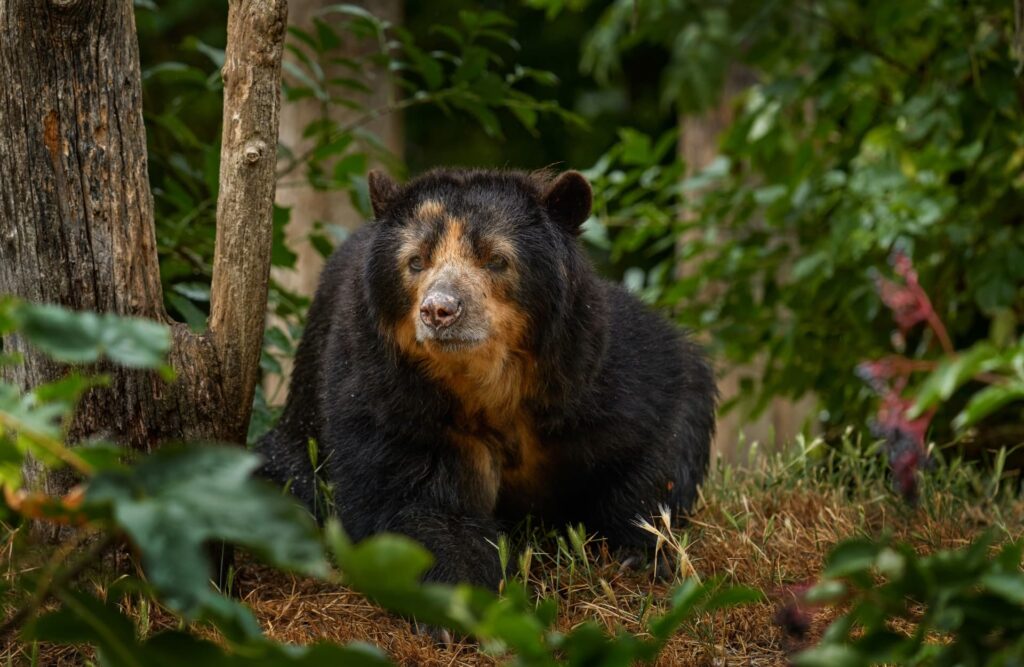
Each of these animals contributes to the rich tapestry of life in Machu Picchu, adding to its allure as a natural wonder.









